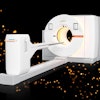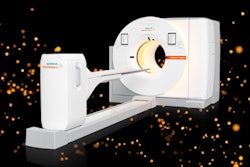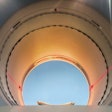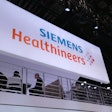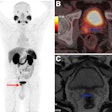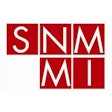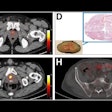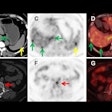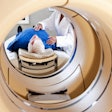Biogen scientists have developed a SPECT/CT imaging agent for tofersen, the company’s drug for treating amyotrophic lateral sclerosis (ALS).
In a study in rats, monkeys, and three healthy humans, the technetium-99m (Tc-99m)-based radiotracer helped visualize for the first time how the drug is distributed in the central nervous system, noted lead author Brendon Cook, PhD, and colleagues.
“This approach could guide and optimize [antisense oligonucleotide] therapy development for neurodegenerative diseases, such as ALS,” the group wrote. The study was published November 20 in the Journal of Nuclear Medicine.
Tofersen (Qalsody) is an antisense oligonucleotide (ASO) treatment for ALS in adults who have a mutation in the superoxide dismutase 1 (SOD1) gene. The drug was approved in April 2023, yet its biodistribution and regional brain uptake are not fully understood and have not been characterized in humans, the researchers explained. This is a barrier to guiding and optimizing the therapy for patients, they added.
To bridge the knowledge gap, the investigators first synthesized the tracer by radiolabeling tofersen with the SPECT isotope Tc-99m using a MAG3 chelator (binding molecule). Sequentially, the group then intrathecally injected Tc-99m MAG3-tofersen and unlabeled tofersen in rats, two male and two female cynomolgus monkeys, and three healthy human volunteers via lumbar puncture, followed by whole/body SPECT/CT imaging.
 SPECT imaging of Tc-99m MAG3-tofersen in healthy human volunteers. (A) Maximum-intensity-projection images showing distribution of Tc-99m MAG3-tofersen in humans (n = 3) one, four, and 24 hours after intrathecal injection. Time–activity curves derived from SPECT data measuring activity in ROIs in CNS (lumbar, thoracic, and cervical spine ROIs include both cord and proximal CSF) (B), kidneys and liver (C), and brain atlas (D).Journal of Nuclear Medicine
SPECT imaging of Tc-99m MAG3-tofersen in healthy human volunteers. (A) Maximum-intensity-projection images showing distribution of Tc-99m MAG3-tofersen in humans (n = 3) one, four, and 24 hours after intrathecal injection. Time–activity curves derived from SPECT data measuring activity in ROIs in CNS (lumbar, thoracic, and cervical spine ROIs include both cord and proximal CSF) (B), kidneys and liver (C), and brain atlas (D).Journal of Nuclear Medicine
In addition, tofersen was generally well-tolerated. The most frequently reported adverse events were procedural pain (reported by all three participants), followed by back pain (reported by two participants). Most adverse events were mild, and none were considered related to the radiotracer, according to the researchers.
“The broad uptake of the [tracer] in the brain and spinal cord in the healthy volunteer study is consistent with the clinical effects of tofersen observed in individuals with SOD1-ALS,” the group wrote.
The group noted that these were initial experiments, and future research may involve using longer-lived isotopes such as zirconium-89, as Tc-99m limits analysis to a 24-hour window. The use of PET technology, particularly the new generation of scanners, could also increase visualization of small brain structures and minimize the radiotracer dose needed to acquire high-quality images, the team added.
Cook and colleagues suggested that their approach may be useful in developing and assessing other ASO treatments.
“The study framework can be run with other ASOs, enabling direct measurements of drug distribution in otherwise inaccessible tissues and compartments to support drug development activities,” they concluded.
The full study can be found here.



